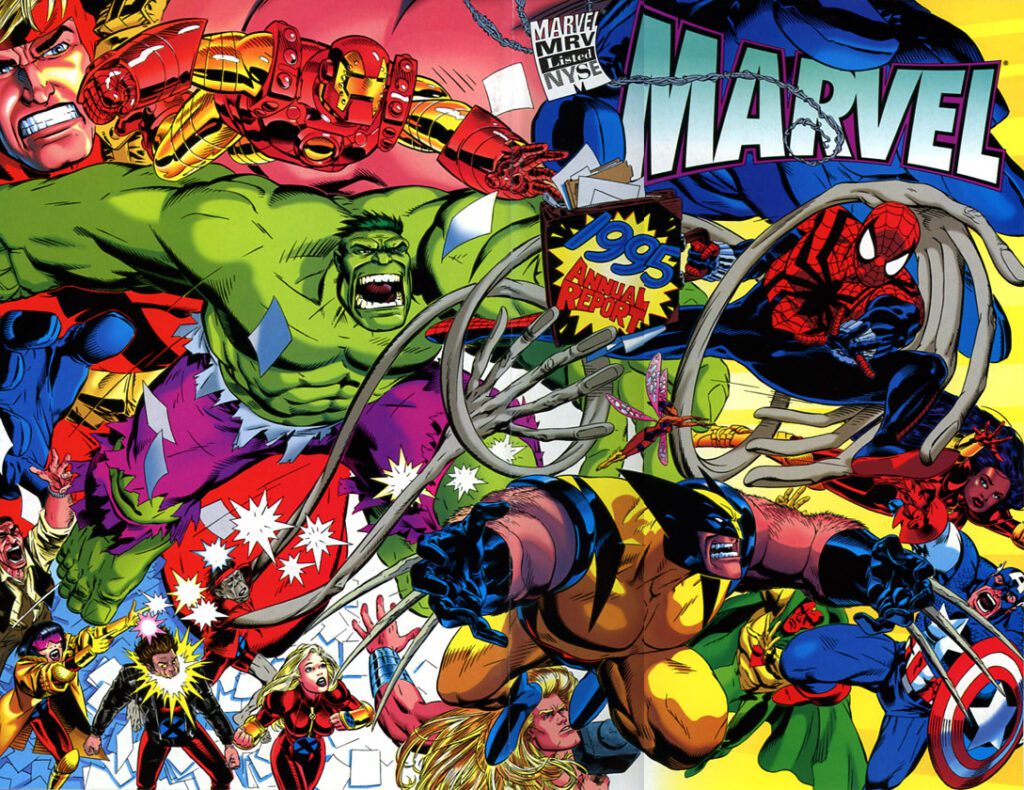Marvel Comics is the primary imprint of Marvel Worldwide Incorporate, part of Marvel Entertainment. The Walt Disney Company purchased the parent company in 2009 and has been making films up until today. But did you know Marvel Comics made a comic book about finances?
Marvel published their financial reports in comic book form in the 1990s. Characters such as Spider-Man and The Incredible Hulk were seen in the comics discussing revenue sources and future business plans.
The Unique Financial Report
On December 17, 1991, thirty years ago today, a bombshell exploded in comics, Wall Street, and the media. After a spectacularly successful year in which Spider-Man #1 sold an unprecedented 2.5 million copies, owner Ronald Perelman launched a Marvel Comics Initial Public Offering, raising more than $63,000,000.
Gary Fishman, the founder of a Wall Street investor and public relations firm and a lifelong comic book fan, reached out to Marvel CEO Bill Bevins to see how he could assist. Bevins’ first task was to help Marvel with its upcoming quarterly shareholder report.
Fishman addressed the issue of how to communicate the unique and complex Marvel Comics Universe within a typically dry stockholder report in a meeting with Marvel executives, including President Terry Stewart and CFO Robert Riscica.
They came up with the idea of turning the report into a comic book featuring Marvel superheroes. Working with editor Glenn Herdling and the Marvel Method of the story to art to dialogue, Fishman developed the plot, Herdling found some of Marvel’s best artists to pencil, ink, and color, and Fishman wrote the copy, conveying everything the lawyers and SEC demanded, and Herdling put everything together.
So, thirty years ago today, a slim four-page comic book with a cover by legendary artist John Romita Sr. debuted. Inside, Spider-Man and the Incredible Hulk, who was wearing, appropriately, an accountant’s green eyeshade, discussed net income, publishing revenues, and earnings per share. (Source: Columbia University Libraries)
Marvel’s Creativeness
The news made an immediate impact. Nothing like it had ever been seen before. The subsequent annual report was even more impressive. It was a 36-page stapled book on glossy paper that combined information in the form of comics, introduced by Uatu the Watcher, with updates on licensing, advertising, and other topics, as well as traditional financial tables and text.
Jimmy Palmiotti, George Roussos, and John Romita Jr. were among the artists. The New York Times, USA Today, The Wall Street Journal, Financial Times, and Institutional Investor covered Marvel’s comic book quarterly and annual reports from Main Street to Wall Street in the United States and worldwide. They also received art and design awards from organizations such as the International Academy of Communications Arts & Sciences.
The IPO’s and reports’ success reflected the universal appeal of these costumed characters, which has only grown in our modern age and evolving social response to comic books, which were once thought to be disposable trash fit only for children.
RBML now has a complete set of all these reports, the red herring and final prospectuses for the IPO, newspaper and magazine articles, award certificates, and other related documents and publications, including a recent Back Issue magazine documenting the history and impact of Marvel’s shareholder reports, thanks to Gary Fishman’s generosity and recognition of the importance of these materials. Fishman’s collection complements both our comics archives and our publishing history holdings. With the Marvel Cinematic Universe currently dominating both Hollywood and streaming television, it’s interesting to look back at one of the company’s earlier forays into cultural dominance. (Source: Columbia University Libraries)
